Template for Landlord Rental Agreement Termination Letter
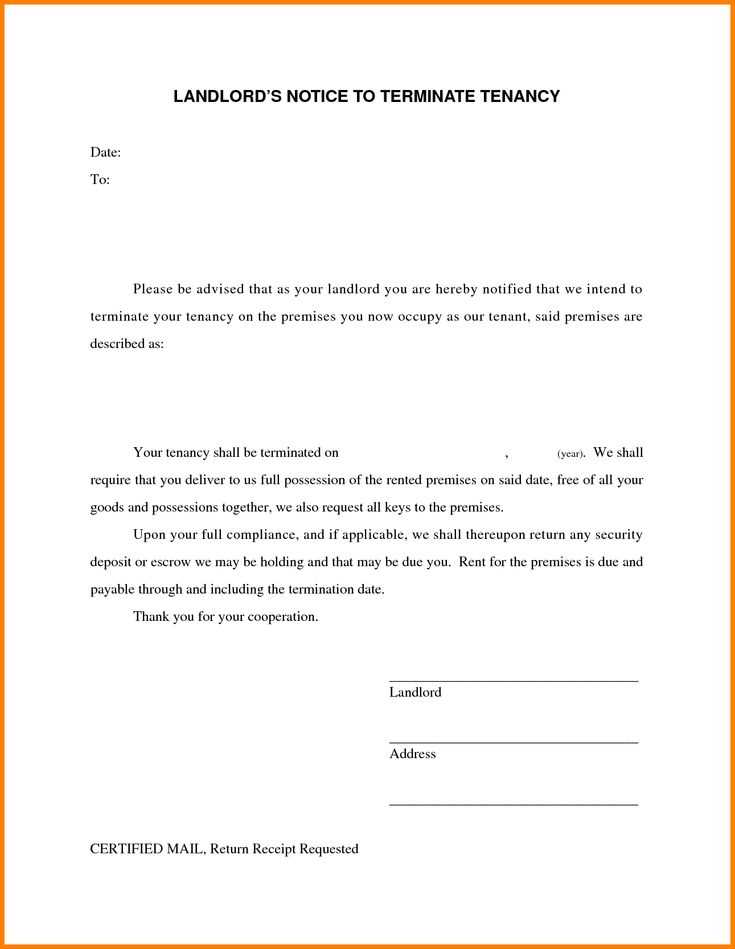
When a property owner decides to end a tenancy, it’s crucial to inform the tenant formally and clearly. This ensures that both parties are on the same page and that the process complies with relevant laws. The notification should provide essential details, such as the reason for ending the lease, the date of effect, and any other necessary terms to avoid confusion.
Effective communication is key in maintaining a professional relationship with tenants, even when the decision to end the tenancy is difficult. A well-crafted notice helps prevent misunderstandings and sets the stage for a smooth transition. It’s important to ensure that the document is legally sound and properly delivered, which can help prevent potential disputes later on.
Key Elements of a Rental Termination Letter
When ending a tenancy, it is essential to provide a clear and concise document that outlines the necessary details of the process. This helps ensure that both parties understand their rights and responsibilities. The following components should be included in a formal notification to effectively communicate the decision.
Important Details to Include
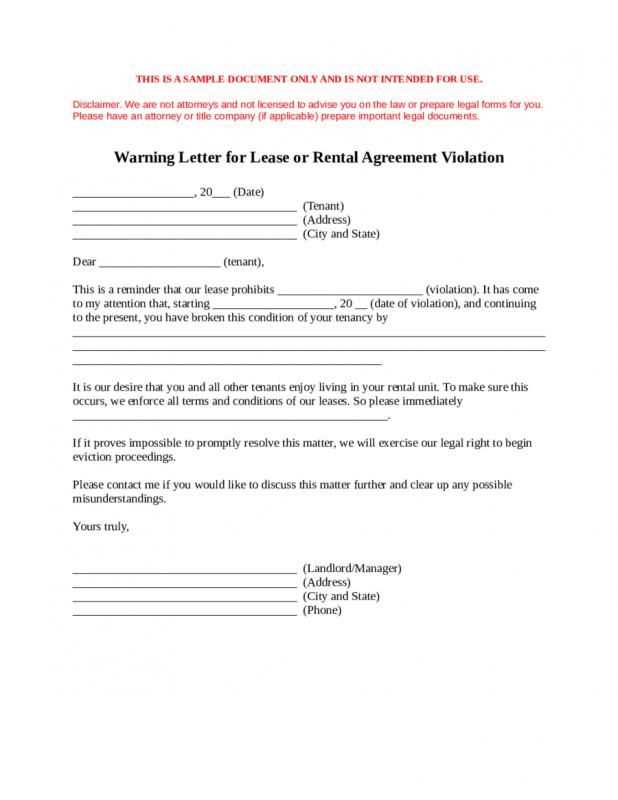
- Date of Notice: Indicate when the communication is being sent to the tenant.
- Effective Date: Specify the exact date the tenancy will end.
- Reason for Ending the Tenancy: State the reason, if required, to maintain transparency and prevent misunderstandings.
- Outstanding Payments: Mention if there are any overdue amounts or other financial obligations that need to be settled.
- Next Steps: Outline any additional actions required, such as the return of keys or property inspection.
Formatting and Tone
The tone of the communication should remain professional, respectful, and neutral. Clear language will ensure that the recipient fully understands the details. It is important to avoid unnecessary emotional language or ambiguity, as this can cause confusion or lead to potential disputes.
Understanding the Legal Requirements for Landlords
Property owners must be aware of the legal responsibilities involved when ending a tenancy. There are specific laws that govern the process to ensure fairness for both parties and to avoid potential disputes. These legal obligations vary depending on the jurisdiction, but certain key factors remain consistent across many regions.
First, it is important to know the required notice period, which typically varies depending on the duration of the tenancy and local regulations. Failure to provide adequate notice could lead to legal complications. Additionally, any reason for ending the arrangement must comply with applicable laws, such as avoiding discrimination or retaliation against the tenant.
In some cases, specific documents must be used, and they must meet certain criteria to be legally binding. Understanding these details can help property owners avoid costly errors and maintain a professional and lawful process when ending a tenancy.
How to Properly Format a Termination Notice
When ending a tenancy, it’s essential to present the information clearly and in a professional format. The structure of the communication plays a significant role in ensuring that the recipient understands the message and can take the necessary actions. A well-organized document helps avoid confusion and potential disputes.
The format should begin with a clear heading, followed by the date and the recipient’s details. The body of the document should include the reason for the decision, the effective date of termination, and any specific instructions regarding the move-out process or financial matters. It’s crucial to keep the language straightforward and formal to maintain clarity and professionalism.
Common Reasons for Ending a Rental Agreement
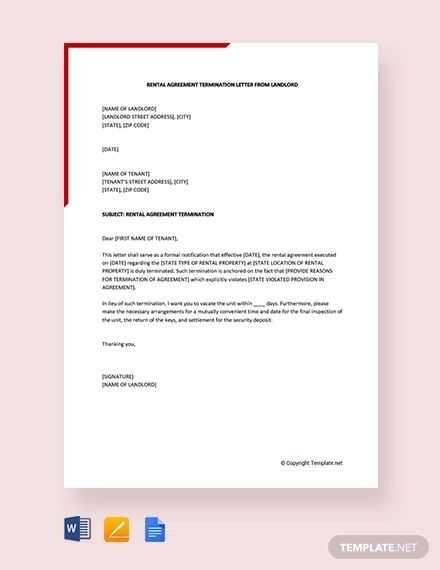
Property owners may decide to end a tenancy for various reasons, ranging from financial issues to personal preferences. Understanding the most common causes for terminating a lease helps both parties navigate the situation with transparency and respect. Below are some of the typical factors that might lead to the end of a tenancy.
Non-Payment or Late Payments
One of the most common reasons for ending a tenancy is the tenant’s failure to pay rent on time. Repeated late payments or non-payment can strain the relationship between the tenant and the property owner, making it necessary to bring the arrangement to a close.
Violation of Terms
Another frequent reason is the tenant’s violation of the agreed-upon terms, such as damage to property, illegal activities, or having unauthorized occupants. If these terms are repeatedly breached, the owner may choose to end the lease to maintain their property’s integrity and comply with local regulations.
| Reason | Description |
|---|---|
| Non-Payment | Failure to pay rent consistently or on time, leading to financial instability. |
| Property Damage | Excessive damage or neglect that affects the property’s condition. |
| Illegal Activity | Engaging in unlawful behavior on the premises, including drug use or criminal activity. |
| Subletting Without Permission | Allowing others to occupy the property without prior consent from the owner. |
Steps for Delivering a Termination Letter
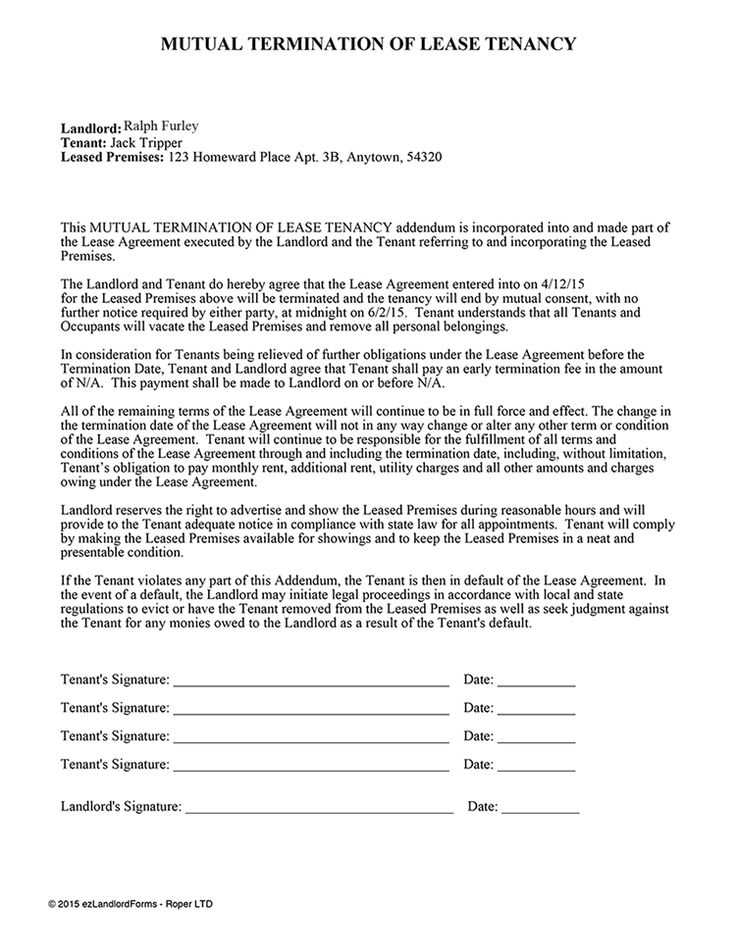
Once the decision to end a tenancy has been made, the next step is to deliver the formal notification to the tenant. It’s important to follow a clear and effective process to ensure that the message is received and understood properly. Below are the necessary steps for delivering a proper notice to vacate.
Choose the Right Delivery Method

There are several methods for sending the notification, including hand delivery, postal mail, or email, depending on the local laws and the preferences of both parties. Hand delivery is often the most direct and reliable method, as it provides proof that the tenant received the notice. However, if sending by mail, certified mail with a return receipt is a good option to ensure delivery confirmation.
Ensure Proper Timing
Make sure to deliver the notice well in advance of the required notice period. Most jurisdictions require a specific notice period, which can range from a few weeks to a few months, depending on the circumstances and length of the tenancy. Failure to meet this deadline may result in complications.
Tips for Writing a Clear and Professional Letter
When composing a formal notice to end a tenancy, it is essential to maintain clarity and professionalism. A well-written notice helps ensure that both parties understand the situation and reduces the likelihood of misunderstandings. Below are some practical tips to help you write a clear and effective communication.
Use Clear and Concise Language
Avoid using overly complicated language or jargon. The purpose of the communication is to convey important information in a straightforward manner. Keep sentences short and to the point to make the content easy to understand.
Maintain a Professional Tone
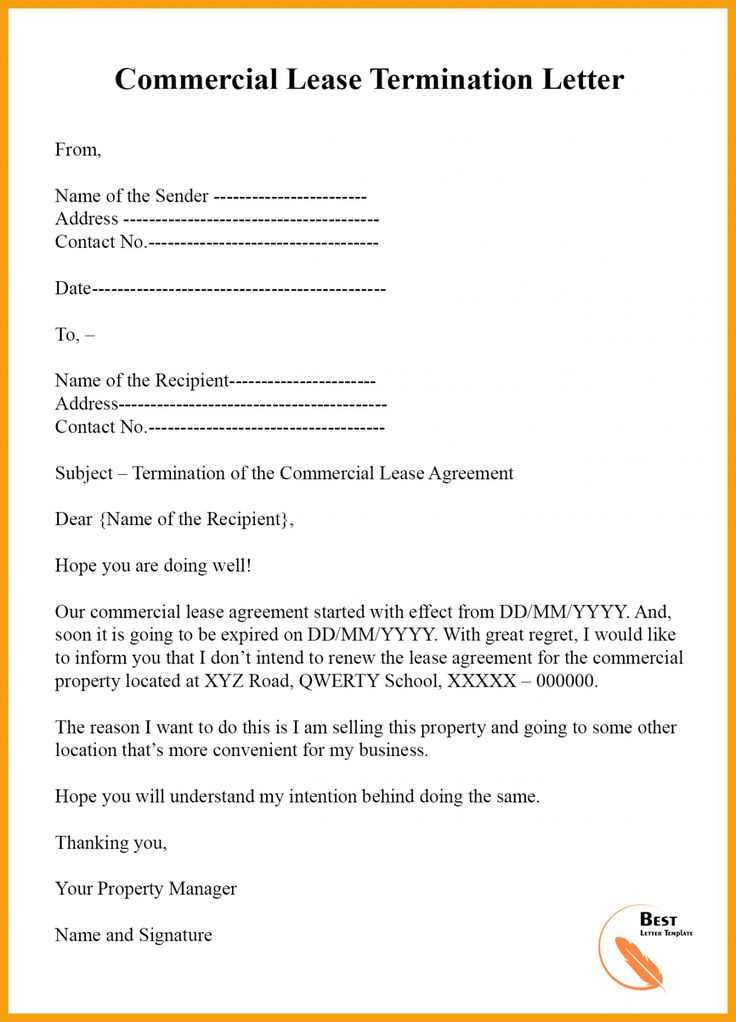
Regardless of the reason for ending the tenancy, always keep the tone polite and respectful. A formal and courteous approach can help maintain a positive relationship with the tenant, which may be beneficial if further matters need to be addressed.
- Start with a formal greeting, addressing the tenant by name.
- Clearly state the reason for the communication, without being overly emotional or accusatory.
- Provide essential details, such as the date the notice is issued and the effective date of the required action.
- End with a polite closing, ensuring the tenant knows how to contact you if needed.
Consequences of Not Providing Proper Notice
Failing to provide adequate notice when ending a tenancy can lead to a variety of legal and financial consequences. When a required notice period is not followed, it may result in disputes, delays, and even potential legal actions. Below are some of the key repercussions that could arise from not following the proper procedures.
One of the immediate effects of not providing sufficient notice is the possibility of the tenant refusing to vacate the premises. In many jurisdictions, tenants have a legal right to stay until the notice period has elapsed. If they are not informed in a timely manner, they may remain on the property longer than expected, causing disruptions to the property owner’s plans.
In addition, the property owner may face legal repercussions, including fines or the need to start legal proceedings to evict the tenant. These actions can be time-consuming, costly, and may damage the relationship between the two parties.